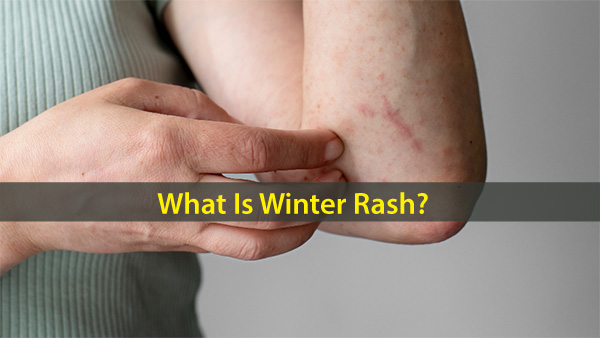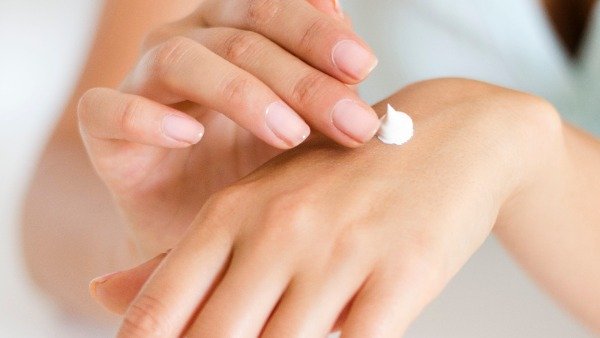Just In
- 1 hr ago

- 2 hrs ago

- 2 hrs ago

- 2 hrs ago

Don't Miss
- Education
 JEE Mains Result 2024 to be OUT Soon: How and Where to Check the Result
JEE Mains Result 2024 to be OUT Soon: How and Where to Check the Result - Finance
 Gold Prices: 10 Grams Of 22-24 Carats Rise By Rs 9,500 To Rs 10,600 From 2024 Lows; Strategy For Buying
Gold Prices: 10 Grams Of 22-24 Carats Rise By Rs 9,500 To Rs 10,600 From 2024 Lows; Strategy For Buying - News
 MPBSE Class 10, 12 Results: Check MP Board Exam Results Online On mpbse.mponline.gov.in/MPBSE/MPBSE
MPBSE Class 10, 12 Results: Check MP Board Exam Results Online On mpbse.mponline.gov.in/MPBSE/MPBSE - Movies
 Rathnam Advance Booking Update: Vishal And Hari's Romantic Action Film Faces Slow Start
Rathnam Advance Booking Update: Vishal And Hari's Romantic Action Film Faces Slow Start - Technology
 COLORFUL EVOL P15 Series Gaming Laptops Launched in India: Check Price, Specifications
COLORFUL EVOL P15 Series Gaming Laptops Launched in India: Check Price, Specifications - Automobiles
 Mahindra Bolero Neo Achieves 1-Star Safety Rating At Global NCAP – Automaker Responds
Mahindra Bolero Neo Achieves 1-Star Safety Rating At Global NCAP – Automaker Responds - Sports
 DC vs GT Dream11 Prediction IPL 2024 Match 40: Squads, Fantasy Tips & Best Picks
DC vs GT Dream11 Prediction IPL 2024 Match 40: Squads, Fantasy Tips & Best Picks - Travel
 Fly in Luxury: 10 Ways to Get Free Flight Upgrades
Fly in Luxury: 10 Ways to Get Free Flight Upgrades
What Is Winter Rash? Causes, Symptoms, Risk Factors And Treatments
Winters can be harsh for the skin in many ways. The cold temperature and air during the season can reduce the moisture on the skin and make it dry.
Winter rash is a skin condition that mainly occurs during the winter season, the time when the temperature drops low, thus causing the skin to get dry and irritated and resulting in a lot of complications. Also, no matter how good your skin is for the rest of the year, winter rash can appear on any skin type.
In this article, we will discuss details on winter rash. Take a look.

Photo Credit: Person photo created by freepik - www.freepik.com
Causes Of Winter Rash
Our skin has many functions such as regulating the body temperature, protecting against pathogens and maintaining the hydration of the skin. When the skin gets dry for a long time, the execution of these tasks is impaired. [1]
Drying of the skin depends on many factors and colder temperature is one of them. Our skin naturally contains oil that helps keep it moisturised. But during the winters, the cold temperature causes the skin moisture to evaporate, leaving the skin cells dry and causing skin rash due to itching.
Some of the other causes of winter rash include:
- Overuse of harsh soaps.
- Stress.
- Infections.
- Reaction due to medicines.
- Sunburns
- Excessive bathing with hot water.
- Excessive use of room heaters.
- Latex allergy

Photo Credit: Medical photo created by wayhomestudio - www.freepik.com
Symptoms Of Winter Rash
Apart from dryness of the skin, other symptoms of winter rash include:
- Rough skin
- Scaly patches on the skin.
- Itching of the skin
- General discomfort
- Stinging of the skin.
- Superficial cracking of the skin.
- Increased susceptibility of aged skin. [2]
What Is Status Epilepticus? Causes, Symptoms, Diagnosis And Treatments
Risk Factors Of Winter Rash
Though winter rash can occur to anyone, some of the factors which can increase its risk are:
- Preexisting skin conditions such as dermatitis. [3]
- Having immunodeficiency conditions.
- Dehydration. [4]
- Having a job that involves extreme outdoor activities.
- Having extra sensitive skin.
- Having respiratory problems such as asthma.
- Rough fabrics like wool.
- Longer use of heaters.
- Certain cosmetic products. [5]
Complications Of Winter Rash
Prolonged winter rash can cause complications such as:
- Psoriasis
- Eczema
- Rosacea [6]
- Dermatitis
- Cold urticaria.
- Other skin infections.
10 Effective Pregnancy Care Tips During Winters
Diagnosis Of Winter Rash
Winter rash is mainly diagnosed by a physical examination of the symptoms by a medical expert. They may ask for the medical history of the patients to identify the underlying disease (if any) causing skin rashes. [7]
Doctors may suggest skin patch testing, a skin biopsy or genetic testing to rule out other possible skin conditions.

Treatments And Management Of Winter Rash
The best way to treat winter rash is to keep the skin moisturised and soothe the irritation. Some over-the-counter topical creams that contain lactic acid can be effective in treating this skin condition. If the skin is extremely cracked, a doctor may suggest dressing to prevent skin infection.
Other ways to manage winter rash include:
- Immediately apply moisturiser after bathing, including applying it several times a day. [8]
- Body oil or natural oils such as coconut oil is also the best option.
- Avoid using harsh soaps during winters. Opt for non-chemical or non-foaming products.
- Though cold, avoid using heaters for long hours.
- Use a humidifier to maintain the moisture of the home. [9]
- Avoid taking extremely hot showers or baths.
- Keep the body hydrated by drinking enough water.
- Wear gloves or clothes to prevent the skin from extremely cold weather.
- Avoid staying in the sun for long hours.
To Conclude
Winter rash can be limited to a small area or may affect the entire body. Consult a medical expert if the rashes get worse with time in spite of using moisturiser or home remedies.
- What is a winter rash?
A winter rash is a skin condition caused due to extremely cold temperatures. The cold air and temperature cause the skin moisture to evaporate at a higher rate, leading to dryness of the skin that could cause winter rash due to itching.
- Is it normal to have rashes during winter?
Yes, it is normal to have rashes during winter. However, the good thing is it can easily be treated by applying a moisturiser and avoiding harsh soaps and hot baths.
- What does winter rash look like?
Winter rash looks like a normal rash on the skin. It can be itchy, red, scaly or cracked skin. Experts suggest applying moisturiser to maintain skin moisture and prevent dryness. If moisturiser and home remedies do not work, you can consult a dermatologist for prescribed medications.
- How do you get rid of winter itch?
The best way to get rid of winter itch is to apply moisturiser. You can also use prescribe lactic acid-based lotions or creams.
- How long do winter rashes last?
Winter rash lasts for a very short period with a proper application of moisturiser or prescribed lotions. Remember, the longer you delay the process, the longer skin may take time to heal and get back to normal.
-
 disorders cureYami Gautam Opens Up About Her Skin Condition Keratosis Pilaris: Causes, Symptoms And Treatments
disorders cureYami Gautam Opens Up About Her Skin Condition Keratosis Pilaris: Causes, Symptoms And Treatments -
 kidsFoods You Should Avoid Giving Your Children With Eczema
kidsFoods You Should Avoid Giving Your Children With Eczema -
 wellnessHow To Treat Intertrigo: Safe And Effective Home Remedies
wellnessHow To Treat Intertrigo: Safe And Effective Home Remedies -
 disorders cureFolliculitis (Infected Hair Follicles): Is It A Major Concern? Causes, Symptoms And Treatments
disorders cureFolliculitis (Infected Hair Follicles): Is It A Major Concern? Causes, Symptoms And Treatments -
 wellness10 Natural Treatments And Home Remedies For Psoriasis Relief
wellness10 Natural Treatments And Home Remedies For Psoriasis Relief -
 beautyTravelling To Manali, Himachal Or Any Cold Place? Here Are 3 Skincare Tips For People With Dry Skin
beautyTravelling To Manali, Himachal Or Any Cold Place? Here Are 3 Skincare Tips For People With Dry Skin -
 beauty3 Ways To Use Petroleum Jelly For Dry Skin
beauty3 Ways To Use Petroleum Jelly For Dry Skin -
 beautyOily Skin With Dry Patches: Embrace The Magic Of This Vegetable!
beautyOily Skin With Dry Patches: Embrace The Magic Of This Vegetable! -
 beautyIs Your Soap Drying Out Your Skin? Let's Find Out!
beautyIs Your Soap Drying Out Your Skin? Let's Find Out! -
 beautyGet Glowing Skin With Dry Brushing: 9 Reasons Why You Need To Try It Today!
beautyGet Glowing Skin With Dry Brushing: 9 Reasons Why You Need To Try It Today! -
 beautyHow To Choose A Facial Cleanser For Your Skin Type
beautyHow To Choose A Facial Cleanser For Your Skin Type -
 beautyTop 4 Ways To Get Rid Of Dry Skin Around Mouth
beautyTop 4 Ways To Get Rid Of Dry Skin Around Mouth


 Click it and Unblock the Notifications
Click it and Unblock the Notifications



